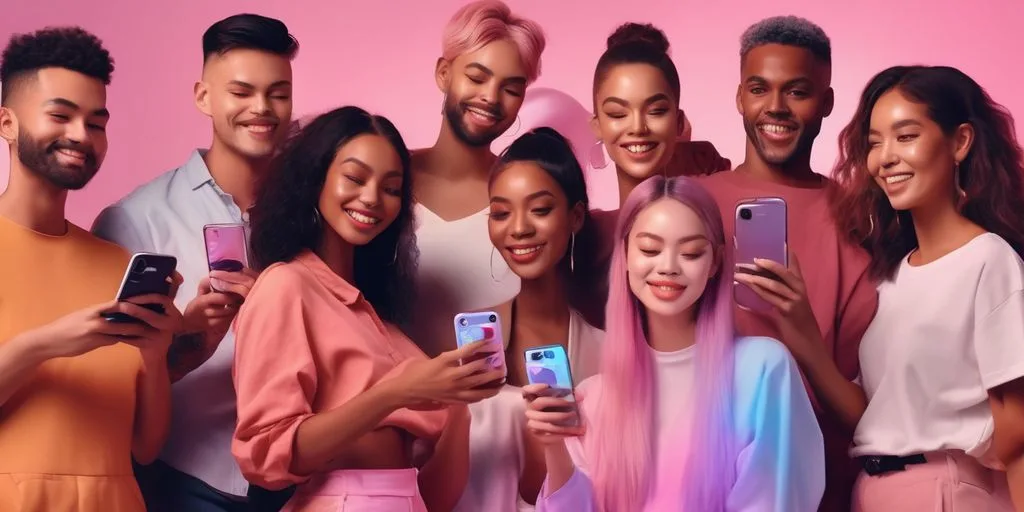
How To Leverage ChatGPT For Writing Customer Retention Emails

In today’s fast-paced digital landscape, maintaining a strong connection with your customer base is paramount for business success. One effective way to achieve this is by crafting compelling customer retention emails. Enter ChatGPT, a powerful language model developed by OpenAI, designed to produce text that feels genuinely human. Let’s delve into the steps to harness ChatGPT for creating impactful customer retention emails.
- What is Customer Retention Emails
- Steps to Leverage ChatGPT for Writing Customer Retention Emails
- Benefits of Using ChatGPT for Writing Customer Retention Emails
- Prompt for Leverage ChatGPT For Writing Customer retention emails
- Tips for Leveraging ChatGPT for Writing Customer Retention Emails
- Final Words
What is Customer Retention Emails
Customer Retention Emails are a fundamental component of a business’s communication strategy aimed at retaining existing customers. Unlike promotional emails designed to attract new customers, retention emails focus on maintaining a connection with those who have already engaged with the brand. These emails serve as a personalized avenue to nurture relationships, offering valuable content, exclusive offers, or updates that cater to the specific needs and preferences of the existing customer base. The goal is to foster brand loyalty, keeping customers informed, engaged, and satisfied with the products or services.
Role of ChatGPT for Writing Customer Retention
This AI-powered language model acts as a creative collaborator, offering unique insights and assistance in developing compelling messages that resonate with existing customers. By streamlining the writing process, ChatGPT enhances efficiency, allowing businesses to tailor their communications more effectively. Its ability to generate personalized content based on individual customer details ensures that messages are not only relevant but also create a deeper connection. ChatGPT plays a crucial role in maintaining consistency in brand voice, contributing to a unified and trustworthy customer experience.
Steps to Leverage ChatGPT for Writing Customer Retention Emails
Step 1: Understanding Your Audience
Before embarking on your email writing journey with ChatGPT, take a moment to comprehend your audience deeply. Analyze their preferences, needs, and pain points. This foundational knowledge will empower you to create personalized and relevant content that resonates with your customers.
Step 2: Defining the Purpose of Your Email
Each email should have a clear purpose. Whether you’re aiming to encourage repeat purchases, introduce new products, or address customer concerns, defining your goal is crucial. This clarity will guide the content generation process when utilizing ChatGPT.
Step 3: Crafting a Concise Email Structure
Organize your email content into a structured and concise format. Begin with a captivating subject line to capture attention. Follow with a brief introduction that sets the tone and establishes relevance. Divide the body into well-defined paragraphs, each focusing on a specific point or benefit. Conclude with a compelling call-to-action that encourages the recipient to take the desired action.
Step 4: Leveraging ChatGPT for Content Generation
Now that you’ve laid the groundwork by understanding your audience and defining your email’s purpose, it’s time to tap into the creative capabilities of ChatGPT. Use it to generate engaging and persuasive text aligned with your email’s purpose. Provide ChatGPT with relevant prompts and guidelines, refining the generated content to ensure it aligns with your brand voice.
Step 5: Personalizing and Customizing
While ChatGPT excels at content generation, adding a personal touch is essential. Customize the content by incorporating specific details about the recipient, such as their name, previous purchases, or relevant interactions. Personalization fosters a stronger connection with customers, increasing engagement with your email.
Step 6: Proofreading and Optimization
After generating content with ChatGPT and adding personalization elements, meticulous proofreading is crucial. Eliminate grammatical errors, check for spelling mistakes, and ensure the email flows smoothly. Optimize the content by naturally incorporating relevant keywords to enhance search engine visibility.
Step 7: A/B Testing and Iteration
Crafting the perfect customer retention email is an ongoing process. Conduct A/B testing to compare different versions, analyzing metrics like open rates and click-through rates. Use these insights to refine your strategy, iterating on your approach to continually improve email performance.
Benefits of Using ChatGPT for Writing Customer Retention Emails
1. Enhanced Efficiency
ChatGPT streamlines the email writing process. Instead of starting from scratch, the model quickly generates relevant content based on your input, saving you valuable time and effort. It even allows for the creation of multiple drafts, enabling you to choose the most suitable one for your specific needs.
2. Increased Personalization
Personalization is key to effective customer retention. By feeding ChatGPT specific customer details, like previous purchases or preferences, the model can craft tailored content that directly addresses their needs and interests. This personalized touch significantly enhances customer engagement and retention.
3. Consistency in Brand Voice
Maintaining a consistent brand voice is essential for building brand recognition and trust. ChatGPT can be trained to understand your brand’s tone and style, ensuring that the generated content aligns seamlessly with your brand guidelines. This consistency strengthens your brand identity and fosters a sense of familiarity and reliability among your customers.
4. Improved Creativity
Generating fresh and innovative ideas for customer retention emails can be a challenge. ChatGPT serves as a creative partner, offering unique perspectives and suggestions to breathe new life into your email content. Whether through alternative phrases, new angles, or attention-grabbing subject lines, it revitalizes your email marketing strategy.
Prompt for Leverage ChatGPT For Writing Customer retention emails
Prompt 1
“Greetings, I would like your assistance in creating a script for a follow-up call about a particular product or service that we offer. Specifically, I am looking to reach out to a lead who has expressed interest in our product or service but has not yet made a purchase. Can you help me craft a script that will help me effectively communicate the value of our product or service and encourage the lead to make a purchase?”
Prompt 2
“Greetings, I want to write an email to retain our customers and address a specific concern or issue that some of our customers have been experiencing. I would like your help in crafting a message that will assure our customers that we are aware of the issue and provide them with a solution to the problem. Can you assist me in creating a personalized email that will help us to maintain a healthy relationship with our existing customers?”
Prompt 3
“Greetings, Can you generate an email that will help us cross-sell a particular product or service to our existing customers who have previously purchased a related product or service? I would like your help in crafting an email that is tailored to the interests and purchasing history of our customers, and that effectively communicates the value of our new product or service.”
Prompt 4
“Greetings, I need to write an email to re-engage a specific customer who has not made a purchase in the past [specific timeframe]. Can you help me craft a message that will encourage the customer to make a purchase? I would like your assistance in creating a personalized email that will appeal to the customer’s interests and preferences, and that will effectively communicate the value of our product or service.”
Prompt 5
“Greetings, I am looking to inform our customers about a specific update or change to our product or service. I want to reassure them that the change will not affect the quality of our service and help them understand the benefits of the update. Can you help me write an email that is concise and effective, and that will help us to maintain a strong relationship with our customers?”
Read More: Learn how to use ChatGPT for crafting social media contracts.
Tips for Leveraging ChatGPT for Writing Customer Retention Emails
1. Provide Clear Instructions
For the most accurate and relevant output from ChatGPT, offer clear instructions. Specify the email’s purpose, target audience, and any specific details to include. The precision of your instructions directly impacts how well the generated content aligns with your requirements.
2. Review and Edit
While ChatGPT assists in content generation, it’s crucial to review and edit the output before sending it to customers. Occasionally, the model may produce content that requires refinement or fine-tuning. Take the time to polish the generated text, ensuring it aligns with your brand voice and fulfills the email’s intended purpose.
3. Use ChatGPT as a Writing Assistant
Instead of relying solely on ChatGPT for content generation, consider using it as a writing assistant. Overcome writer’s block, generate ideas, or seek suggestions when stuck. Collaborating with ChatGPT enhances your writing skills, resulting in even more effective customer retention emails.
4. Combine AI with Human Touch
While ChatGPT is a valuable tool, human touch remains essential in customer communication. Use ChatGPT to enhance your writing, but always add a personal touch to make the emails genuine and relatable. Strike a balance between AI-generated content and your own expertise to connect effectively with customers.
5. Continuously Train ChatGPT
To improve the accuracy and relevance of the generated content, regularly train ChatGPT with real customer retention emails from your business. Fine-tune the model based on your data to ensure it understands industry-specific terminology, customer preferences, and your unique brand voice.
Final Words
In conclusion, integrating ChatGPT into your email marketing strategy can elevate your efforts in retaining customers. By combining the power of ChatGPT with a deep understanding of your audience, you can create emails that not only captivate but also foster long-term customer loyalty.
For more such information come to our array of prompts to the way of your work.








